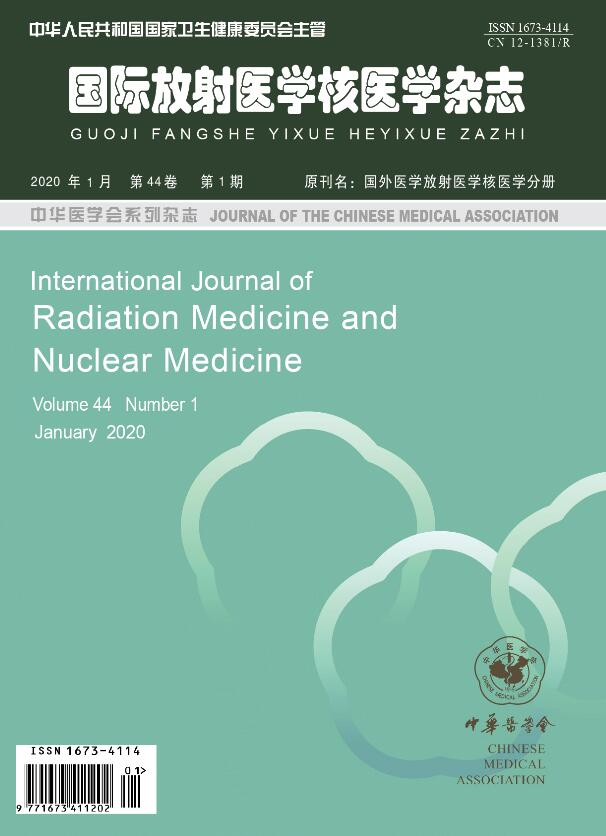-
在当前医疗数据体系中,诊断结果由人工完成的医学影像诊断(X线、CT、MRI 等)数据约占90%,这个比例仍在逐年增加。全国医学影像的从业人员处于短缺状态,与影像数据的增长之间存在相当大的不平衡[1]。这表明医学影像医师会承担越来越大的数据分析压力。人工智能(artificial intelligence,AI)与医学影像的结合,将帮助医师进行诊断,提高医学影像的诊断效率,因此AI在医学影像诊断方面的应用成为较有发展前景的领域。
HTML
-
1956年,AI由美国的JohnMc Carthy 提出,标志着AI时代的诞生。AI经过早期的探索阶段,现正向着更加体系化的方向发展,成为一门独立的学科,其涉及许多基础学科,包括计算机科学、数学和哲学等。AI已经被应用到众多的行业中,如医疗、电商、餐饮、交通和军事等。随着图像处理技术、云服务、大数据及深度学习等技术的飞速发展,AI也实现了新的发展[2]。
-
AI算法包括输入、输出、明确性、有限性和有效性等基本特征。AI发展经历了传统的机器学习算法(如人工神经网络、决策树、自适应增强)和深度学习算法。深度学习算法主要的特点是能够从原始的图像中自动发现内部结构[3],而卷积神经网络强大的自动提取功能使其成为深度学习的一个重要组成部分。
-
随着对医学影像诊断准确率要求的提升,数十年前就有了将AI和医学影像结合的理念,并且逐渐开始应用。早期AI以知识工程为主要研究方向,如专家系统[4]、计算机辅助系统[5]、疾病建模和推理等。近年随着AI的发展,医学影像技术与AI的结合对一些疾病的诊断已经取得了突破性的进展,如脑内病变、头颈肿瘤和消化系统疾病等。这种结合可能改善医学影像医师的供不应求问题。2017年国务院印发了《新一代人工智能发展规划》,加快了医学影像结合AI的发展及应用[6]。
-
常规X线常用来诊断肺炎、肺结核和气胸等胸部疾病,由于肺纹理、肋骨及锁骨对病灶的遮挡,肺结核在诊断中容易被年轻的医师漏诊,故消除骨性结构干扰能够提高诊断的准确率。Yang等[7]使用深度卷积神经网络产生融合骨骼图像,从原始X线胸片图像中消除融合骨骼图像,产生高分辨率的软组织图像,其平均消除骨性结构干扰率达83.8%。Heo等[8]在年度工人健康检查中使用计算机辅助诊断(CAD)检测结核病,并在图像模型和人口统计学变量模型中进行测试,结果显示,人口统计变量模型比图像模型具有更高的灵敏度(分别为81.5%和77.5%)。Pasa等[9]研究认为疾病模型需要很多参数及更高的硬件配置要求,这易导致模型使用中出现僵化,对此提出采用可视化方法,在保证准确率的前提下,该方法比疾病模型更快、更有效。我国的临床科研人员已经和美国国家医学图书馆[10]合作,试用X线胸片自动检测系统检测结核病,其检测精度可达到 92%~95%。这一结果提示该系统可作为筛查和诊断结核病的有效方式。
外伤后骨折是患者就诊的原因之一,其主要检查方法为X线。紧急情况下X线平片的误诊率较高。Kim和MacKinnon[11]提出将AI应用在骨折平片的诊断中,并评估医师在有无AI帮助下检测骨折的准确率,结果发现,在AI的辅助下,医师的误诊率相对降低了47.0%。Cheng等[12]通过AI系统对老年人的髋部骨折进行检测和定位,结果显示其灵敏度为98%、特异度为84%、假阴性率为2%。提示该系统定位骨折病变具有较高的准确率。
-
近年来全球头颈部肿瘤的发病率明显上升,且病理类型以鳞状细胞癌较多见,部分患者经历了不必要的手术,并引起并发症,因此肿瘤诊断的准确率对医师和患者来说具有重要意义[13]。Forghani等[14]使用AI辅助双能量CT纹理分析头颈部鳞状细胞癌及预测相关的颈部淋巴结转移,并且与CT单能量纹理评估进行比较,结果显示,双能量CT纹理分析头颈部鳞状细胞癌的准确率优于单能量CT纹理分析,双能量CT纹理分析与AI结合可以辅助肿瘤评估,且准确地预测淋巴结转移。为了预测淋巴结与肿瘤预后的关系,Bur等[15]研发了预测阴性隐匿性淋巴结转移的AI模型,与肿瘤浸润深度模型相比,其预测性能较好,分类最佳,同时减少了病理性淋巴结阴性患者的颈部清扫成本并降低了发病率。
肺癌是我国常见的恶性肿瘤之一,其发病率和病死率居高不下,早期筛查是防治肺癌的主要手段。CT断层显像显示肺内小结节与肺组织周围的小血管断面的形态和密度相似,两者的鉴别是筛查早期肺癌的关键。应用AI辅助CT检查可以提高放射科医师的诊断效率和准确率。Ciompi等[16]提出采用卷积网络的AI系统对CT图像中的结节进行自动分类(实性结节、非实性结节、部分实性结节、钙化结节、叶间裂周围结节、分叶状结节),其诊断结果与两位临床医师的诊断结果一致。结果提示该系统有良好的结节分类性能。
随着生活节奏的加快和工作压力的增加,脊椎疾病的患病率逐年上升并呈年轻化趋势。Muehlematter等[17]使用AI辅助骨骼纹理分析评估椎骨骨折患者,结果显示两者结合具有较高的准确率。Tomita等[18]提出对早期无症状的老年骨质疏松性椎体骨折采用一种自动检测骨折的AI系统,该系统可以在胸部、腹部和骨盆CT检查时检测偶发的骨质疏松性椎体骨折,其准确率达到 89.2%。
-
帕金森病(Parkinson disease,PD)是一种常见的神经退行性疾病,PD 的早期准确诊断对早期介入干预和治疗具有重要的意义。目前,MRI可以检测PD患者大脑的微小变化,脑部MRI的定量分析可以提高临床诊断效率。随着AI的快速发展,Zeng等[19]应用AI系统分析小脑灰质变化对PD的诊断价值,同时通过交叉验证方法区分可能的PD患者与健康者,其准确率超过95%。有研究发现神经黑色素敏感磁共振成像对于识别PD中黑质致密部的异常至关重要。Shinde等[20]使用卷积神经网络从神经黑色素敏感磁共振成像中找出诊断PD和PD预后的生物标志物,其准确率为80%,区分PD与非典型PD的准确率为85.7%。
鼻咽癌是一种侵袭性肿瘤,具有较高的发病率,放疗是其主要治疗方法[21]。放疗后鼻咽癌的3年局部控制率高于80%,3年总生存率达到90%[21]。为了避免放疗的不良反应,需要对肿瘤进行有效地分割和轮廓勾画。Li等[21]应用AI联合MRI对肿瘤进行分割,并评估其准确率,结果显示骰子相似系数、百分比匹配及对应比值分别为0.89±0.05、0.90±0.04和0.84±0.06。该项研究结果的各项数值均优于同类研究中的报告值。Lin等[22]应用AI轮廓工具自动勾画出肿瘤的体积轮廓,其准确率较高,同时在AI辅助下临床医师勾画肿瘤轮廓的准确率得到提高。
直肠癌是消化道最常见的恶性肿瘤之一,容易被直肠指诊及乙状结肠镜方法诊断。但因其位置深入盆腔,解剖关系复杂,需要明确定位,并与周围正常组织分开。Trebeschi等[23]应用AI算法中的深度学习对多参数MRI图像中直肠癌的定位和分割进行了研究和评估,结果显示,深度学习在两种不同的读片系统中均显示出分割的高准确率(骰子相似系数分别为68%和70%)。Wang等[24]采用一种基于深度学习的自动分割系统对磁共振T2加权成像上的直肠肿瘤进行分割,该系统的分割结果与影像科医师的分割结果相似。淋巴结转移是直肠癌转移的主要途径之一,Ding等[25]研发了一种卷积神经网络的AI快速识别系统,用于诊断直肠癌的转移性淋巴结,该系统的诊断结果优于影像科医师。
乳腺癌的筛查方法包括乳腺钼靶和MRI。乳腺钼靶主要检测乳腺内肿块,不易与腺体相鉴别,有较高的误诊率。Al-Antari等[26]提出采用一种基于深度置信网络的计算机辅助系统自动检测MRI中乳腺肿块的区域并鉴别其良恶性,结果显示,其总体准确率达90%以上。Ha等[27]基于AI研发出一种依赖于原始数据的输入并自动构建统计模型的方法,根据MRI特征预测乳腺癌的分子亚型,结果显示,其总体灵敏度和特异度分别为60.3%和95.8%。
-
核医学影像是医学影像的一个重要组成部分。AI与核医学已初步结合,Shen等[28]将深度学习与18F-FDG PET/CT结合预测早期宫颈癌患者的局部复发和远处转移情况,结果发现,两者结合预测局部复发的灵敏度、特异度、阳性预测值、阴性预测值和准确率分别为71%、93%、63%、95%和89%;预测远处转移的灵敏度、特异度、阳性预测值、阴性预测值和准确率分别为77%、90%、63%、95%和87%。Shibutani等[29]探索人工神经网络检测SPECT心肌灌注区域异常的准确率,结果发现,与两名经验丰富的核医学医师相比,人工神经网络显示出更高的特异度。Ma等[30]提出应用AI辅助SPECT显像诊断甲状腺疾病,其中包括Graves病、桥本甲状腺炎和亚急性甲状腺炎等3类疾病,结果表明,采用卷积神经网络法结合SPECT显像能够有效地诊断甲状腺疾病。
3.1. AI在X线诊断中的应用
3.2. AI在CT诊断中的应用
3.3. AI在MRI诊断中的应用
3.4. AI在核医学诊断中的应用
-
众所周知,AI在医学影像中的应用主要是对大数据的整合和分析,需要两者真正地融合,更好地服务于医学诊疗。首先,很多AI研究成果并没有应用到实际医学影像工作中,科研转化率较低,国内AI的研究水平仍有待提高。其次,超声作为影像检查的方法之一,以其方便、无创、经济等优势占据医学影像的一部分,AI与超声结合的研究相对较少,应加大开发力度。最后,作为一名医学影像从业者要客观地看待AI与影像医学的结合,合理应用,使其为临床工作提供强有力的帮助。
利益冲突 本研究由署名作者按以下贡献声明独立开展,不涉及任何利益冲突。
作者贡献声明 贾凯丽负责论文的撰写及文献的查阅,王雪梅负责命题的提出及论文的审阅。








 DownLoad:
DownLoad: